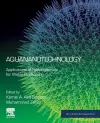
Aquananotechnology
2 contributors - Paperback
£180.00
Kamel A. Abd-Elsalam, Ph.D. He is a head researcher at Plant Pathology Research Institute, Agricultural Research Center, Giza, Egypt. Dr. Kamel’s research interests include developing, improving and deploying plant biosecurity diagnostic tools, understanding and exploiting fungal pathogen genomes and developing eco-friendly hybrid nanomaterials for controlling toxicogenic fungi and plant diseases. He has published, 26 chapter in books, 12 review articles, 14 books, 1 translated book, and more than 133 research articles in international peer reviewed journals including Fungal Diversity, Fungal Biology, International Journal of Biological Macromolecules, FEMS Review Microbiology, PLOS One and PLOS Genetics. He is associate editor for Mycosphere, and review editor for Frontiers in Genomic Assay Technology and referees for journals, including the Plant Pathology, Journal of Phytopathology, and Crop Protection, IET Nanotechnology, Fungal Diversity, BMC Genomics, Foodborne Pathogens and Diseases. Dr. Kamel has pursued his Ph.D. in Molecular Plant Pathology from Christian Alberchts University of Kiel (Germany) and Suez Canal University (Egypt) and then been awarded postdoctoral fellowship from Christian Alberchts University of Kiel in 2008. Dr. Kamel served as visiting associate professor in Institute of Excellence in Fungal Research, Mae Fah Luang University, Thailand, Institute of Microbiology, TUM, Germany, Laboratory of Phytopathology, Wageningen University, The Netherlands and Plant Protection Department, Sassari University, Italy. Dr. Muhammad Zahid, is currently working as Associate professor, at the Department of Chemistry, University of Agriculture Faisalabad, Pakistan He have been working on the synthesis of advanced materials such as graphene, graphene oxide, graphitic carbon nitride and their nano-composites (magnetic, polymer, binary, ternary, bio- composites etc.). These materials have interesting properties such as electrical, optical and mechanical properties etc. The application of these nanomaterials and their composites are being studied in photocatalysis, wastewater treatment. EMI shielding, etc.